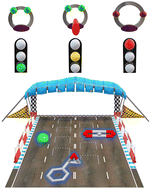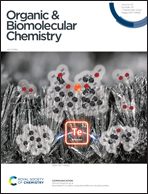Basically, nucleophilicity matters little: towards unravelling the supramolecular driving forces in enzyme-like CO2 conversion†
Abstract
The reaction mechanism for the cycloaddition of CO2 to styrene oxide in the presence of macrocyclic pseudopeptides has been studied using DFT methods. Computational calculations indicate that the unprecedented catalytic behaviour previously observed experimentally, in which the most reactive species was not the most nucleophilic but the most basic one, can be associated to the tight cooperativity between several supramolecular interactions promoted by simple peptidomimetics able to display a synzymatic behaviour. This bizarre catalytic performance afforded remarkable conversions of a sluggish substrate like styrene oxide into the desired cyclic carbonate, even under relatively mild reaction conditions, opening the way for the practical use of CO2 as a raw material in the preparation of valuable chemicals. Furthermore, the remote modification of essential structural features of the macrocycle (synzyme engineering) permitted the driving forces of the synzymatic system to be analyzed, stressing the crucial synergic effect between an elegantly preorganized oxyanion hole and additional aromatic interactions.



 Please wait while we load your content...
Please wait while we load your content...